Artists of Guantanamo
-
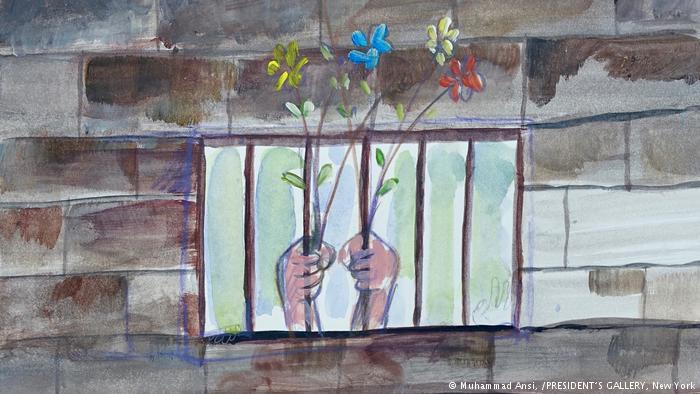
'Hands Holding Flowers through Bars' (2016): Muhammad al-Ansi was born in Yemen and was held at the Guantanamo Bay detention camp for a total of 15 years under extrajudicial detention practices. He alleges that he was tortured during his incarceration, saying that painting helped him cope with the conditions at Guantanamo. Creating landscapes and flowers helped him escape the reality of everyday life at the notorious prison -
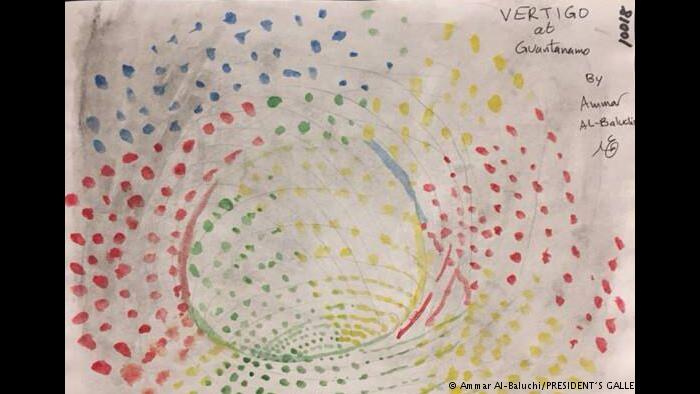
'Vertigo at Guantanamo' is the title of this watercolour by Pakistani inmate Ammar Al-Baluchi. Al-Baluchi has been held at Guantanamo for more than 10 years, having been held at a series of CIA prisons for more than three years before that. His paintings are a direct response to the conditions he has had to suffer in custody, including allegations of torture -
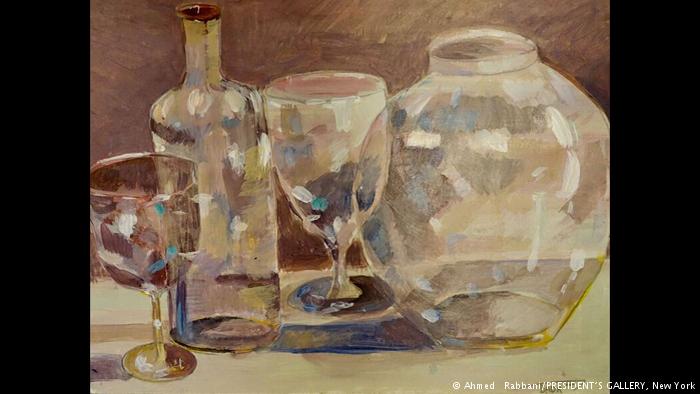
'Prison still life': Ahmed Rabbani is another Pakistani inmate at Guantanamo who was held at a number of CIA detention facilities for two years before his transfer to the notorious prison on the island of Cuba. Like most other detainees there, Rabbani is accused of having links to the 9/11 attacks and is alleged of being a member of al-Qaida. His paintings, however, speak of ideas far removed from terrorism -
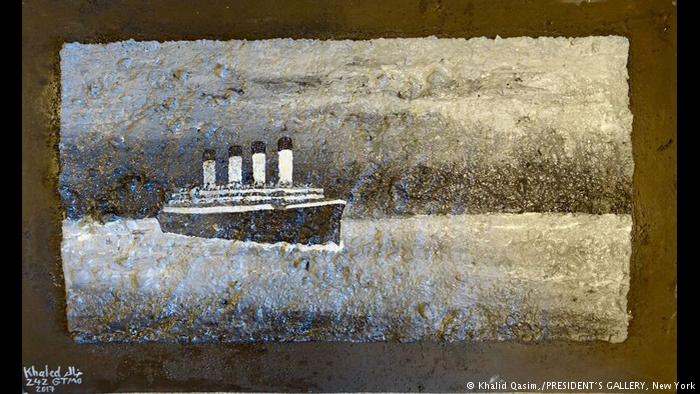
'Titanic' (2017): when the detainees at Guantanamo ran out of regular paint they had to improvise with other materials. Khalid Qasim, one of 41 prisoners still held at Guantanamo Bay, used coffee powder and sand to finish this miniature depiction of the Titanic out at sea -
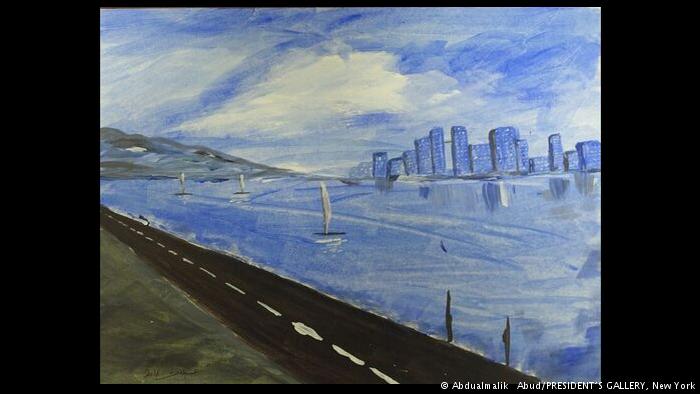
'Cityscape' (2016): the sea appears to play a central role in many of the paintings created by Guantanamo detainees. The waves crashing against the bay are can apparently be heard from all prison cells. Abdel Malik Al Rahabi, who was released in 2016 after spending 15 years at Guantanamo, painted this seaside cityscape from memory -
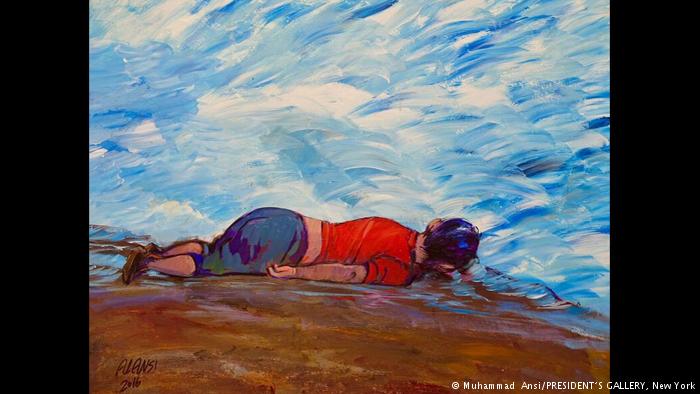
'Drowned Syrian Refugee Child' (2016): images of the body of drowned Syrian refugee boy Aylan Kurdi went around the world in 2015 and even made it into the prison cells at Guantanamo, after former U.S. President Barack Obama allowed inmates to have access to television in 2008. Yemeni inmate Muhammad al-Ansi, who was transferred to custody in Oman in early 2017, painted this image after hearing of the tragic event -
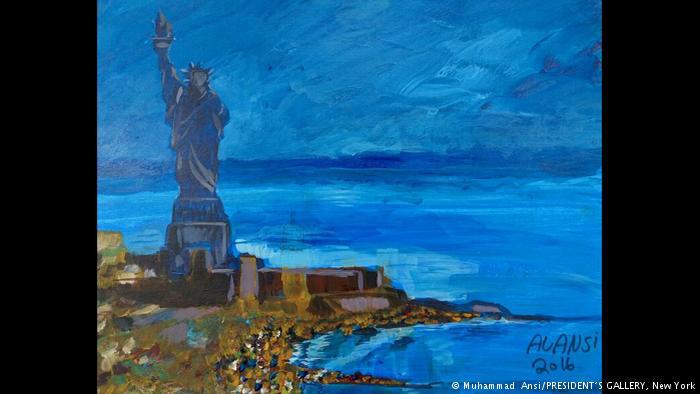
"Statue of Liberty": some of the prisoners′ artworks were inspired by photos, such as this one, painted by Muhammad Ansi in 2016. For the ″Ode to the Sea″ exhibition, curators Erin Thompson, Paige Laino and Charles Shields intentionally selected works by four prisoners who have already been released and four still in detention. It was the first time that the paintings had been shown -
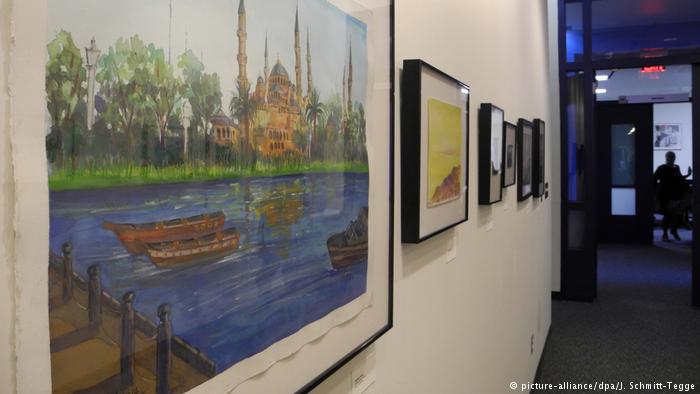
President's Gallery, New York: the exhibition "Ode to the Sea: Art from Guantanamo" was hosted by the "President's Gallery" at New York's John Jay College of Criminal Justice, a renowned liberal arts school in Manhattan. The art show, which ran until January 26 2018, attracted a lot of controversy throughout the U.S. -
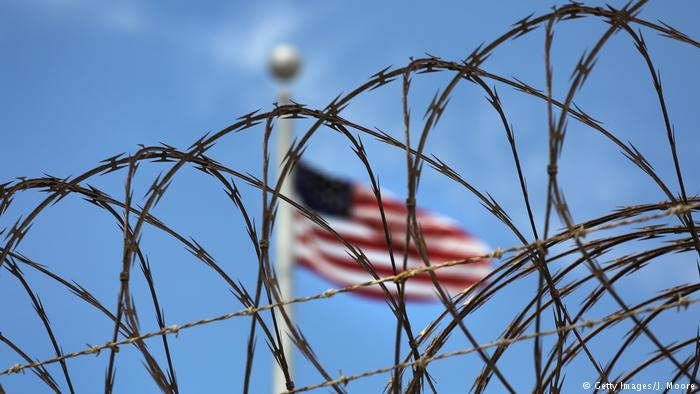
Life behind barbed wire: despite a pledge by former U.S. President Barack Obama to close the Guantanamo Bay detention camps, the notorious prison facility is still operating. When Obama started his presidency there were 242 inmates at Guantanamo. By the end of 2017, only 41 remained. It is unclear if or when they might be released or transferred to other facilities -

A glimpse of Guantanamo: a rare photo from the strictly regimented life of a prisoner, taken inside the facility by Walter Michot, a reporter for the Miami Herald. Everything in Guantanamo is monitored by the U.S. military, with images intended for publication subject to strict censorship
https://qantara.de./en/node/28106
Link
To all image galleries
